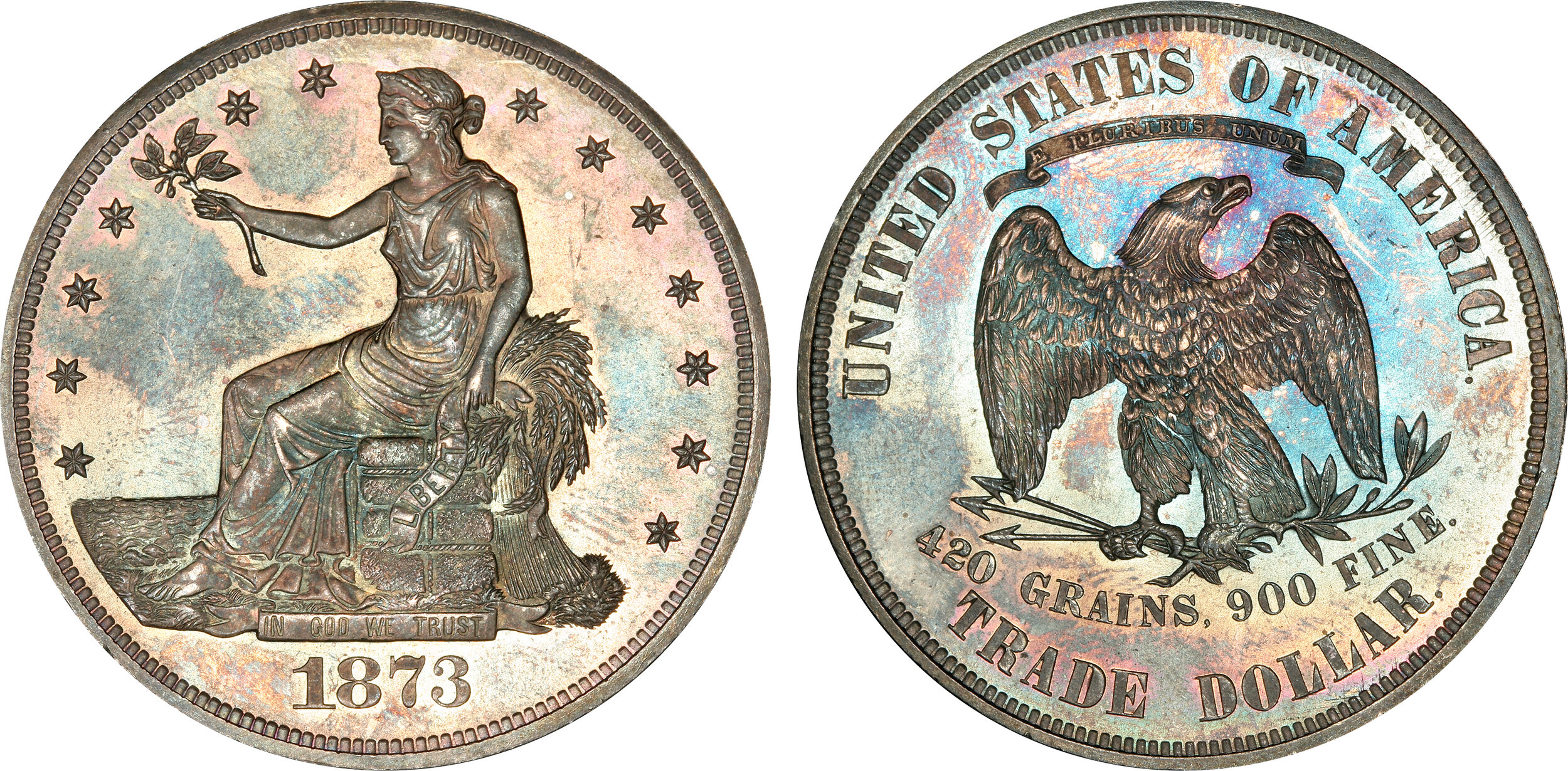Trade Dollar
Trade Dollar
David Bowers (edited and updated by Mike Sherman): The Trade dollar was first minted in 1873 in response to the need for a coin to compete with the Mexican “dollar” (actually the 8 Reale or Peso) in the Orient. Weighing 420 grains, or slightly heavier (1.8%) than a standard silver dollar, the Trade dollar was intended for export only. Despite this, they were legal tender in the United States until 1876, at which time Congress revoked their status. Quantity production continued through 1878, after which point only token quantities were made for proof sets through 1883 (the few pieces dated 1884 and 1885 are of dubious origin). In 1887, the law authorizing the Trade dollar was repealed, and the treasury officially redeemed all un-mutilated pieces.
The obverse depicts Miss Liberty seated on a bale of merchandise, her right hand holding a branch, her left hand holding a ribbon inscribed “LIBERTY, a sheaf of wheat behind, and the sea in front. IN GOD WE TRUST appears at the bottom just above the date. Stars surround the upper portion. The reverse depicts an eagle holding three arrows and a branch, with E PLURBUS UNUM on a ribbon above, 420 GRAINS, 900 FINE, below. The inscription UNITED STATES OF AMERICA and TRADE DOLLAR surrounds.
The numismatist today can readily secure a trade dollar in grades from Fine through AU. Some pieces display chopmarks, consisting of Oriental characters impressed by bankers and merchants when the pieces circulated in the Orient. Except for the ultra-rare Proofs of 1884 and 1885, most dates are available, although a good portion of the 1878-CC’s were melted shortly after they were struck, making them elusive today. Uncirculated coins are scarce, and superb Uncirculated pieces are rare. Proofs exist in proportion to their original mintages and are primarily available from the years 1879 through 1883.
